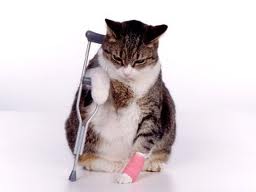Animals and children have many things in common, and one of them is that they often make our hearts leap out of our chests for some cause. They are mischievous, curious, innocent, trusting, playful and, consequently, prone to accidents. Today we show you some guidelines about cat first aid so you can be prepared. Urgent action is key to avoid tragic endings.
When we find our cat injured or in bad shape, the first thing to do is to examine it to find out what has happened to it. You will have to do a general inspection. Check for bleeding, breathing, pulse, temperature, strange odors, and it is important to check the color of the mucous membranes.
Important details in assisting a cat in distress
It is especially important to pay attention to parts of the body such as the head and neck, abdomen, spine and neurological status.
Holding him gently, examine his neck for pain or stiffness, pupils and response to light. Look for wounds on the face or skull, as well as if it is expelling blood or any type of fluid from the ears or nose.
You will have to take care to find out the condition of his ribs, his jaw and the position of his teeth, if he has trouble chewing or swallowing. And also its abdomen to know, by gently palpating if it hurts (in case of pain it will hunch over and scream) or if it makes sounds.
To check the neurological status, touch his eye and see if he blinks, check for flaccidity or stiffness of the limbs.
In any case, act carefully and urgently and run to the veterinarian.








